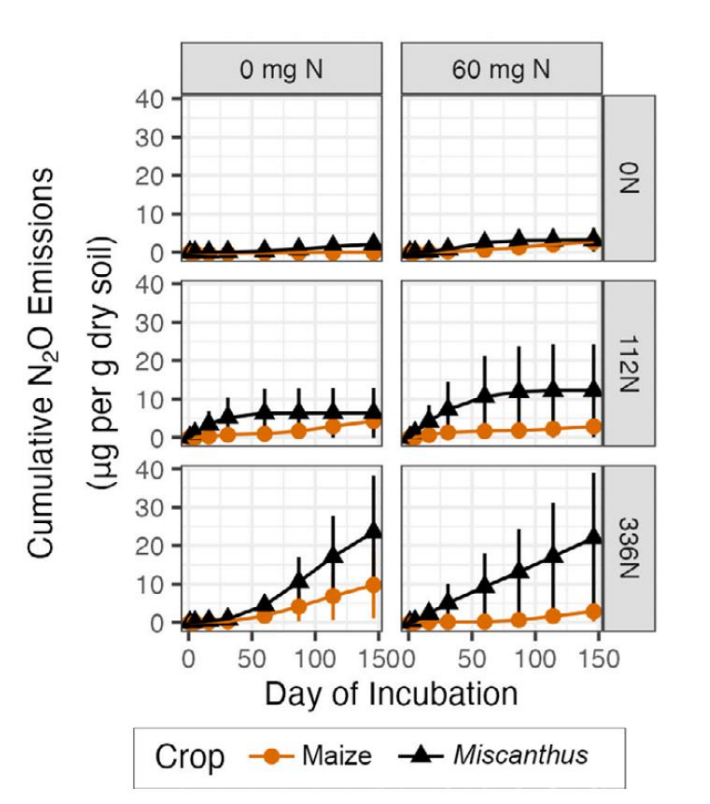Impacts of Legacy and Contemporary Nitrogen Inputs on N2O and CO2 Emissions in Miscanthus and Maize Cultivated Soils
Themes: Sustainability
Keywords: Carbon, Field Data, Nitrogen, Soil
Citation
Lee, J., Villanueva, P., Glanville, K., VanLoocke, A., Yang, W.H., Kent, A., McDaniel, M., Hall, S., Howe, A. Dec. 28, 2024. “Comparison of Soil Responses to Long-Term Fertilization and Short-Term N and C Amendments in Miscanthus and Corn.” GitHub Repository.
Overview

Nutrient inputs influence the sustainability of bioenergy crop production through contemporary (shortly after addition) and legacy effects (persisting over years) on microbial nitrogen (N) and carbon cycling, which contribute to greenhouse gas emissions. However, the relative importance of contemporary and legacy effects and how that could vary by crop functional types is poorly understood. Considering its rhizomatous roots and perennial growth, we hypothesized that Miscanthus × giganteus (M×g) would be more sensitive to legacy N fertilization and the historical context of its environment than an annual crop like maize. To test this hypothesis, we examined the effects of legacy and contemporary N inputs on nitrous oxide (N2O) and carbon dioxide (CO2) emissions, as well as key N cycling genes in soils where M×g and maize were grown. A 150-day soil incubation experiment was conducted using soils from a long-term M×g and maize fertility experiment with three historic N fertilization rates (0, 112, and 336 kg N ha−1 year−1) and a contemporary amendment (60 mg N kg−1) with negative control (0 mg N kg−1). We observed significant increases in cumulative N2O emissions in Mxg soils relative to maize soils, particularly at higher legacy fertilization rates, while contemporary N had no significant effect. Bacterial amoA gene abundance, which plays a significant role in nitrification in nutrient-rich soils, also increased with higher legacy fertilization rates in M×g soils but was unaffected by the contemporary N. In maize soils, legacy and contemporary N did not significantly affect N2O emissions, but cumulative CO2 emissions and amoA gene abundance significantly increased. The abundances of norB genes were not significantly influenced by either legacy fertilization or contemporary N amendments in either soil. Our findings demonstrate the greater importance of fertilization history over contemporary N in mediating soil N2O emissions, particularly for perennial bioenergy crops.
Data
GitHub: Includes code, LAMPS data, incubation gene data, mineralization data
Download (3.9 MB) includes:
- Pre-incubation soil nitrate/ammonium data
- 3- and 4-way ANOVA data